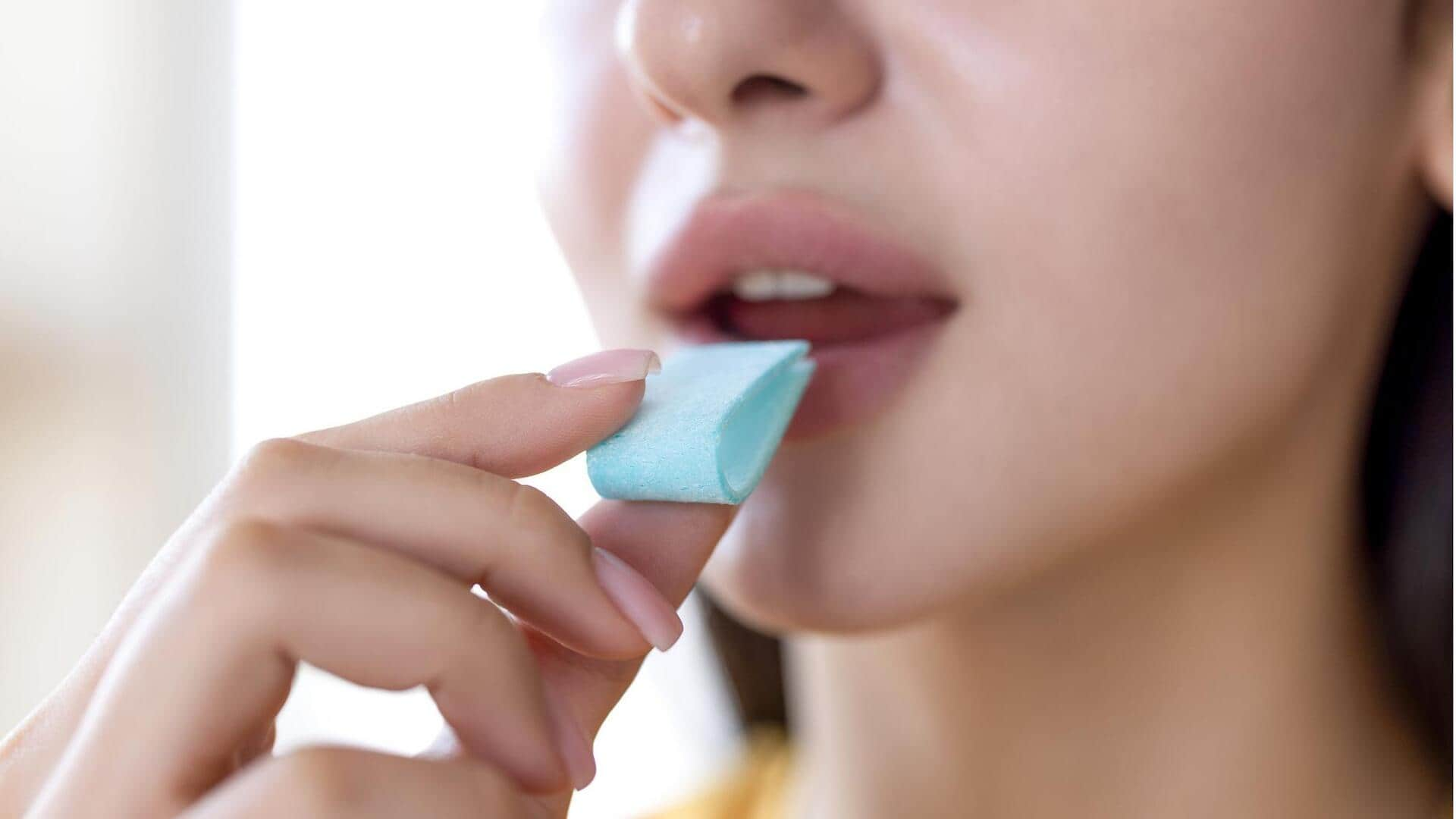
Chewing gum releases microplastics into mouth, warns new study
What's the story
New research has uncovered that chewing gum can release hundreds of tiny plastic particles, or microplastics, directly into the human mouth. The finding further adds to the growing body of evidence indicating the widespread presence of microplastics in our environment and bodies. The study was presented at a meeting of the American Chemical Society in San Diego and is pending publication in a peer-reviewed journal.
Ubiquity
Microplastics found in various environments and human bodies
Microplastics have been discovered in various environments, from mountain tops to ocean depths, and even in the air we breathe. They have also been found inside human bodies, including lungs, blood and brains. The lead researcher of this study Sanjay Mohanty from UCLA said there's no direct evidence linking microplastics to health issues but their presence in our bodies is a concern.
Research details
Study reveals microplastic release from chewing gum
The study sought to show another way microplastics could enter our bodies - through chewing gum. Lisa Lowe, a PhD student at UCLA, chewed seven pieces each of 10 brands of gum. The researchers then chemically analyzed her saliva and found that one gram of gum released an average of 100 microplastic fragments, with some brands shedding more than 600.
Ingestion
Chewing gum as a source of microplastics
The average weight of a stick of chewing gum is about 1.5g. So, those who chew some 180 pieces of gum annually could be consuming approximately 30,000 microplastics. This number is much lower than other known sources such as bottled water, which has an estimated average of 240,000 microplastics per liter (34 fluid ounces).
Composition
Synthetic gum and microplastics
Most chewing gums you find in supermarkets are synthetic, with petroleum-based polymers for that chewy effect. However, these ingredients aren't explicitly listed on the packaging, which just mentions "gum-based." The researchers tested five brands of synthetic gum and five brands of natural gum made from plant-based polymers such as tree sap. Surprisingly, microplastics were found in both types.
Shedding
Microplastics shed during chewing process
Lowe observed that nearly all microplastics were shed during the first eight minutes of chewing. David Jones from UK's University of Portsmouth, who wasn't involved in this study, said he was surprised to find certain plastics not known to be in gum. He said they could have possibly come from another source but found the overall findings "not at all surprising." The world's largest chewing gum manufacturer, Wrigley, is yet to respond to requests for comment on this study.